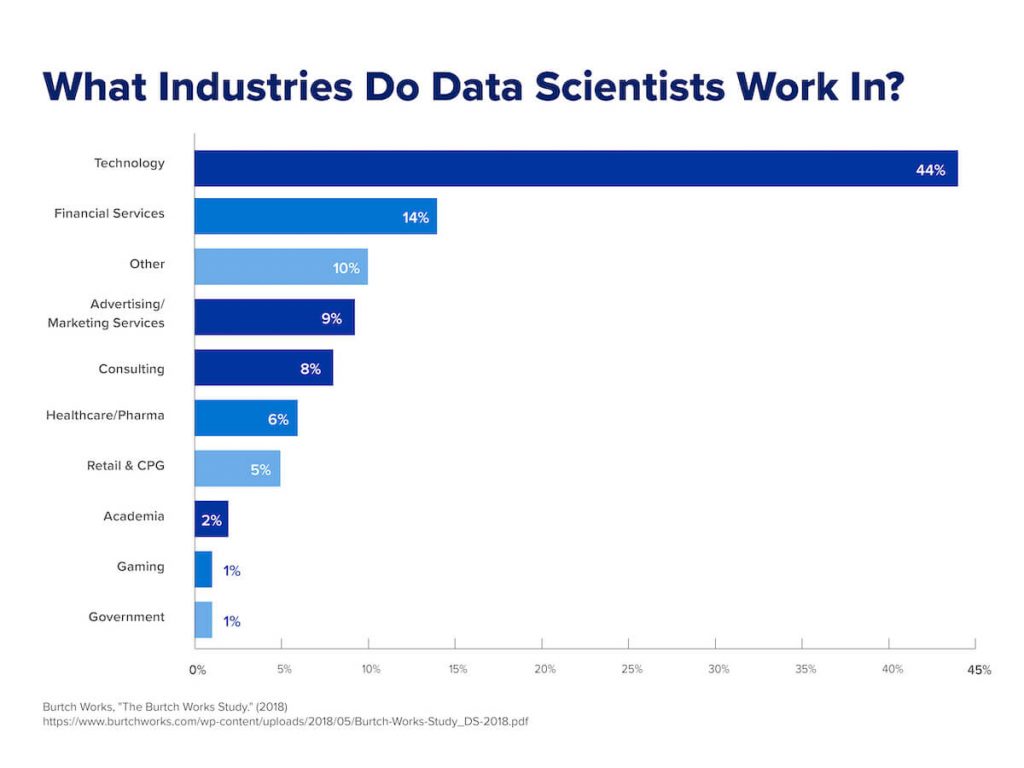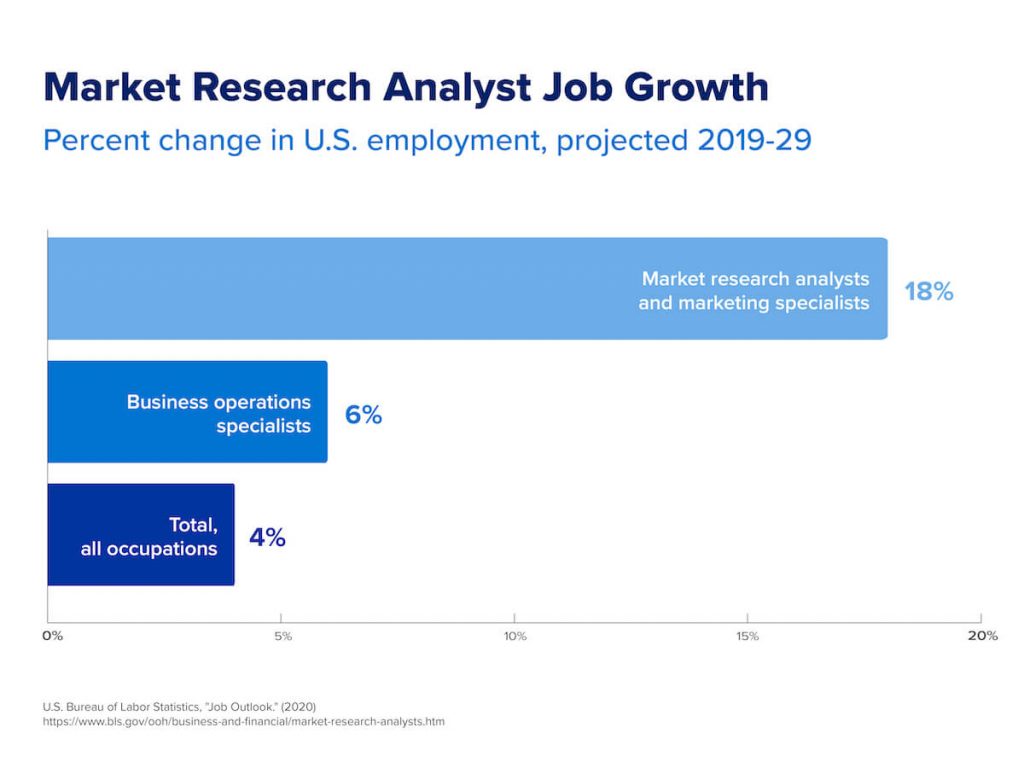But before you start sending out applications, it’s worth laying some groundwork.
If you’ve completed projects as part of your education or elsewhere, you may want to consider compiling your best work in a portfolio. Update it frequently as you complete more work and include it in your applications — interested employers will often be more compelled by the practical work you can do than any cover letter.
You should also think about networking in the data analytics field. Depending on your location, some cities may offer meetups for current professionals in the industry, and large conferences are a great way to learn about industry updates and establish more contacts.
You’ll also want to update your resume and online presence with the most recent possible information, including any education or data analyst certifications you’ve recently received. If you have the time, it can be worth combining all of this information into a personal website to send to prospective employers.
Additional Resources
6. Applying for Jobs
It can be intimidating to take your first steps into such a competitive industry, but there are plenty of opportunities for a skilled data analyst, even if you’re new to the workforce! Go into your job hunt with goals in mind for your desired salary, company culture, and industry. Are you willing to earn more data analyst certifications to stand out? Can you relocate if needed? Being able to answer these questions decisively can be appealing to employers.
When searching, tailor your materials to the companies you apply for. Certain roles may place emphasis on specific skills, so don’t be afraid to highlight those when applying. This is especially important considering the breadth of expertise required in the field of data analytics.
Most importantly, don’t be deterred by rejection! If you’re passionate about data analytics and have the education to perform well, you’ll likely find an opportunity that fits your needs. Even if you feel underqualified for a position, apply anyway — any bit of practice can help you land the next interview.
What Do Data Analysts Do?
While most data analysts share a common set of proficiencies, an analyst’s specific responsibilities and daily schedule may look different depending on their industry and specific role.
What does a day at work look like for a data analyst?
Though used broadly to indicate an assortment of data science roles, “data analyst” is a job title often used for entry-level positions in the field. An analyst may spend their day accessing and cleaning data, finding ways to answer business questions and solve problems, and communicating their findings to other teams.
As you advance in your career as an analyst and gather more data analyst skills, you may end up advancing into a data scientist role. As a data scientist, you would work with algorithms to develop data-based predictions. Other data analyst careers include business analysis, which centers on turning insights into strategic action, or software engineering, which combines programming knowledge and data science to facilitate analytics-recommended changes to company software.
What tools do data analysts use?
Every aspiring data analyst will need to have command over a variety of industry-specific tools. Below, we’ve put together a brief data analyst skills checklist that analysts in training should include in their academic agenda.
Programming Languages
Most data analytics positions require a grounding in one or more industry-relevant programming languages. (These are explained in more detail in the next section.)
Examples:
Data Visualization Tools
Useful for analysts and laymen alike, data visualization tools can help you organize the data you work with and impart your findings to others in your organization.
Examples:
- Tableau
- Google Charts
- Datawrapper
Checklist of Skills Required to Become a Data Analyst
Though companies may seek out professionals with slightly different skill sets, particularly across different positions, several data analyst skills reign supreme among employers.
SQL and NoSQL
Despite being created in 1970, SQL remains one of the most popular database query languages in use today. Though other languages have since come into prominence in the data science field, SQL is still widely used enough to be an important tool in any analyst’s arsenal.
Learning NoSQL is also important. NoSQL subverts the usual relational setup on a SQL database, and as such, there is no standard NoSQL framework. This flexibility tends to make NoSQL databases better at handling massive data troves than their relational counterparts — and thus, more attractive to businesses that need to manage large amounts of data.
MATLAB
MATLAB is a programming language and computing environment that is increasingly favored among businesses for its facilitation of quick data cleaning, organization, visualization, and compatibility with any machine learning model. The efficiency gains provided by MATLAB make it sought after among those working with Big Data. As such, MATLAB proficiency can be a good addition to your resume.
R
R is a programming language with structure and syntax designed to support analysis. It includes several common data organization commands by default and appeals to larger businesses for its ability to handle large or complex stores of data.
Python
Python is a more general-purpose programming language that is a must-learn for its versatility. Many of Python’s libraries are relevant for the use of artificial intelligence, and as such, makes the language increasingly important to a data analytics industry that relies on AI. Some ancillary programs for Python include Pandas and NumPy.
Data visualization
As previously mentioned, data visualization helps bridge the gap between the technical silo of data analytics and non-technical business stakeholders. Being data literate means being able to share complex ideas with business decision-makers and have them understand at a glance. There’s an element of storytelling with data visualization — you need to be able to take your insights and create an actionable narrative for others in your organization.
Data cleaning
Not all data is valuable — or even accurate. Before they can use gathered data, analysts must sift through and “clean” it to ensure that only accurate, reliable information is under consideration. Even with a sophisticated algorithm, the intervention of a data analyst is necessary to make proper use of a machine learning system. Many data analysts spend a significant portion of their time cleaning data.
Machine learning
Even if you don’t specialize in working with machine learning and AI, understanding it is important given its outsized presence in the data science industry. A familiarity with AI-relevant tools and concepts can give you an edge in a job search.
Career Paths in Data Analysis, Visualization, and Science
Not sure where you want to take your career in data analytics? Any of the following jobs are options for someone who has recently completed a data analytics college program or bootcamp.
- Data Analyst: Data analysis is a common, entry-level role responsible for processing large amounts of information to generate insights, often through the use of assorted analytical tools.
- Data Scientist: Data scientists hone machine learning systems and algorithms to model recent developments and predict new ones.
- Business Analyst: A business analyst makes use of data to answer questions about business strategy, often visualizing data through tools such as Excel and Powerpoint.
- Software Engineer: This role centers around the intersection of data science and programming. Software engineers design new software systems and maintain or improve existing ones.
How to get an entry-level data analyst job
Your first job in data analytics will depend heavily on your background. If you’re entering the field with experience in programming, a job as a software engineer might make the most sense. Alternatively, previous experience in business operations and planning may make you better suited to a role as a business analyst.
Whatever your path, it’s important to research what employers are looking for and tailor your learning in a direction that will allow you to thrive professionally. Though a wide range of skills is necessary for data analytics, specializing empowers you to better compete in your field of choice.
Once you’ve tailored your skills to your general career path, you can start looking for specific jobs. To find opportunities, comb through job boards like Indeed or ZipRecruiter and reach out to your network. You may also want to spend some time updating your resume and portfolio to ensure that potential employers receive an up-to-date snapshot of your skills and applicable work experience.
Whatever you do, don’t get discouraged! Job searches take time and effort; with enough of both, you can find and land your dream job.
Data analysis certifications
Certifications offer a method for data analysis professionals to build their resumes and expand their skill sets. A good certification is a vote of confidence for your skills in a certain industry or even with a certain vendor. Some common certifications include:
While bootcamps don’t offer certifications on their own, they can provide the skills necessary to pursue them later on.
How Much Do Data Analysts Make? Job Outlook and Salaries
Given both the prevailing need for data analysts to interpret the data processed by analytics systems and the increased popularity of Big Data, the average data analyst salary and job outlook is good (PDF, 3.9 MB).
How much does a data analyst make?
According to the Bureau of Labor Statistics, the median pay for a market research analyst was $63,790 per year in 2019, with the market expected to grow by 18% by 2029, much faster than average. The outlook is even better for an operations research analyst, with a median pay of $84,810 per year in 2019 and an expected 25% growth by 2029.

 Live Chat
Live Chat

